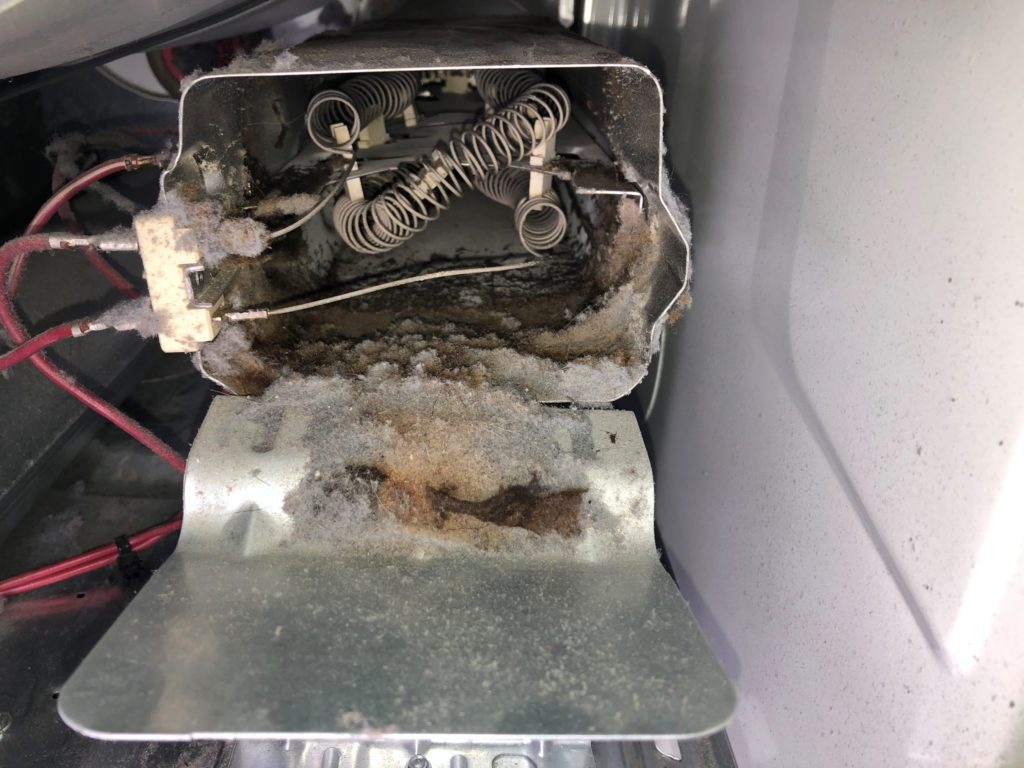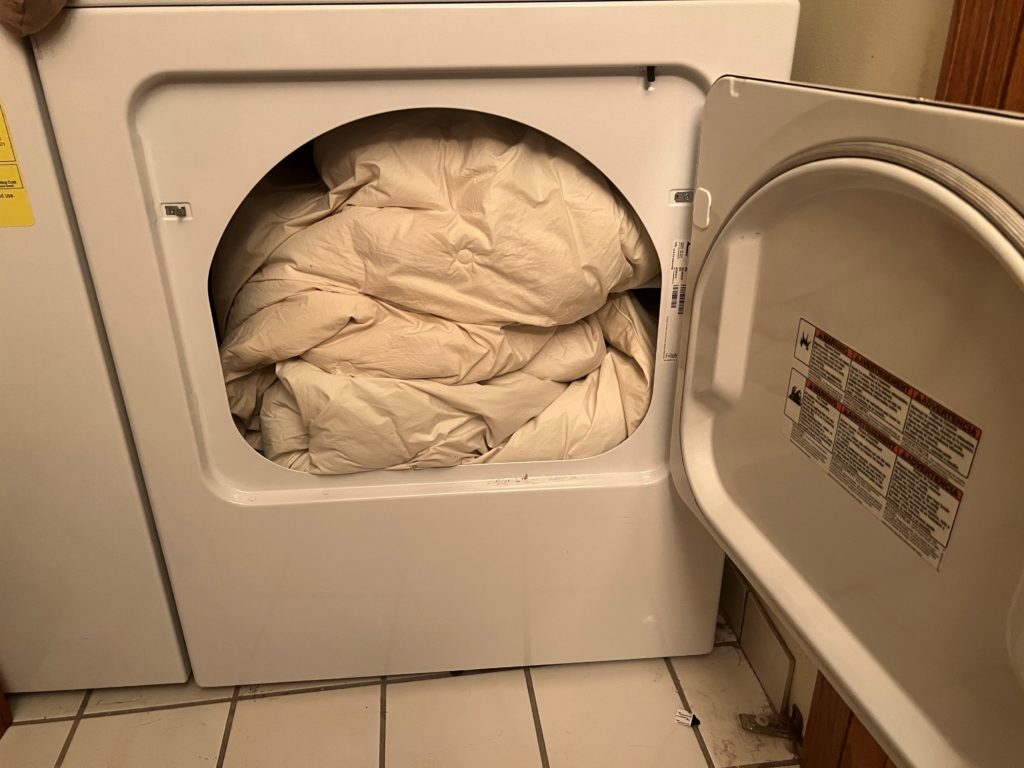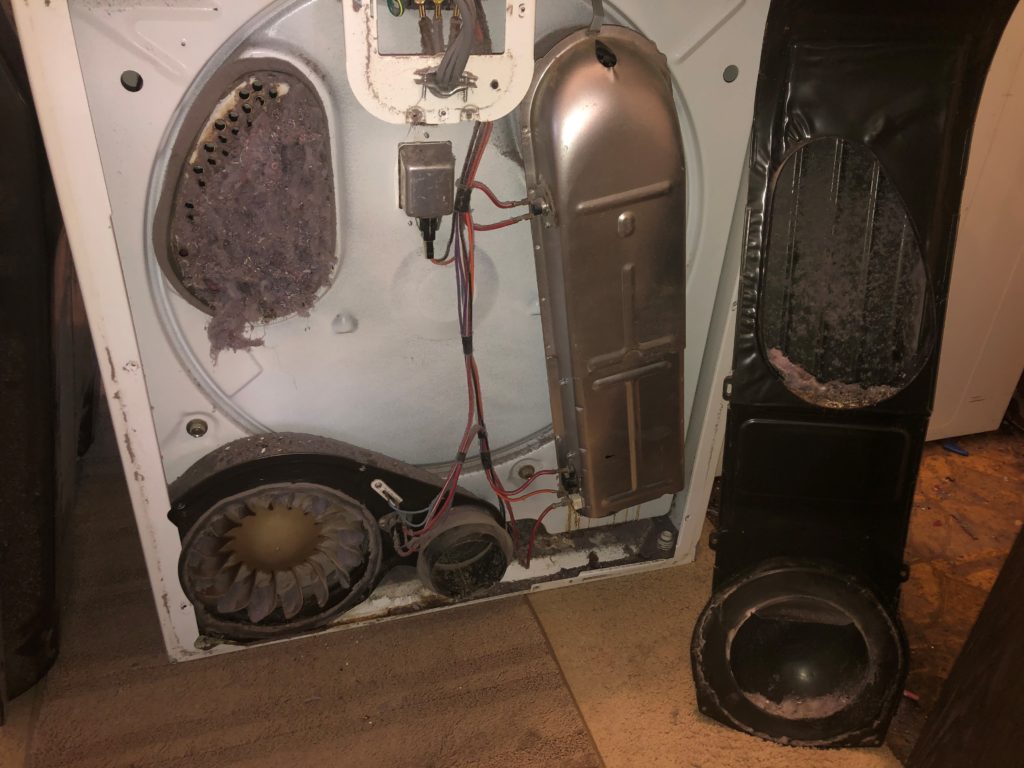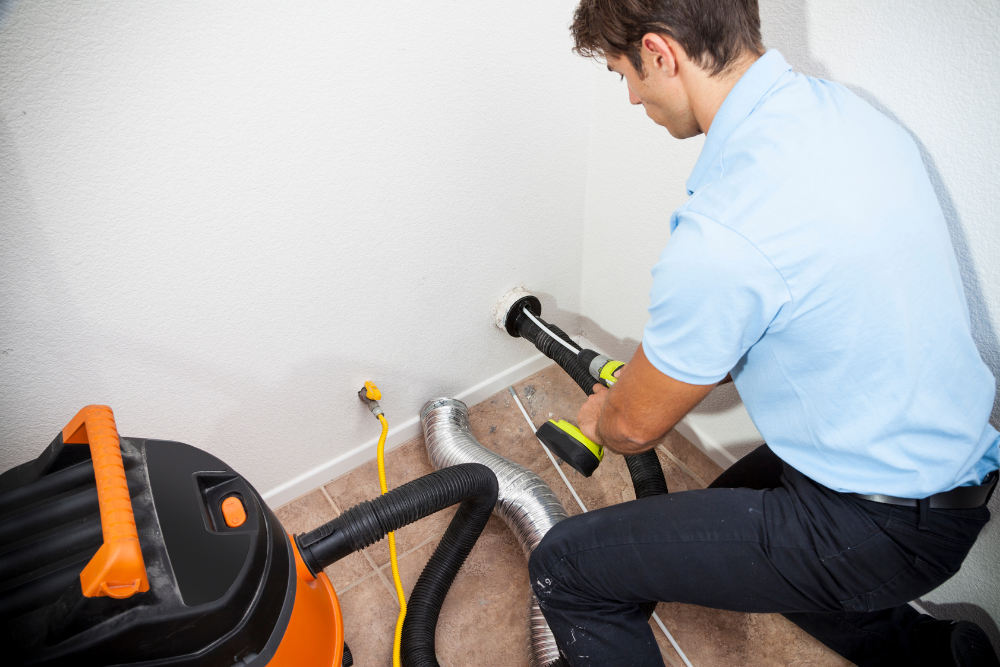Is It Taking Too Long To Dry Your Clothes?
If your dryer is not drying or is taking too long to dry your clothing you may find the tips below helpful. If you are thinking of hiring someone to fix the problem, please be careful. You should always hire a trained professional who works within the appliance industry and fully understands dryer performance.
Your current dryer problem is fire safety related and should be diagnosed and cared for by an experienced dryer service technician. “Handymen”, carpet cleaners, and air duct cleaners typically lack the training to address all the variables that may be contributing to longer drying times. From Madison, WI to Sun Prairie and Waunakee to Verona, our Dryer Doctors have repaired thousands of dryers over the years that were once not drying properly, but today are operating safely and efficiently.
7 Reasons & Remedies for Longer Drying Times
Warning: Some of the tips below may require checking under the drum or inside the machine. If you plan to troubleshoot this yourself, always unplug the machine to disconnect power before working on an appliance.
Reduced Airflow Caused by Lint Build-up

Lint build-up is the primary cause of dryers taking too long to dry. Lint screens/traps do not stop 100% of the lint produced during each cycle. During each dry cycle, a small percentage of lint clings to the lint screen, and begins to adhere to surfaces in both the machine and the dryer vent system. This eventually creates a build-up that reduces the volume of air flowing through the machine. This inadequate airflow causes your dryer to run longer in order to get your clothing dried completely.
Remedy: Thoroughly clean both your dryer and vent system.
Where Lint Accumulates:
If the internal 4-inch duct that exits the back of your clothes dryer, or the fan, the lint trap assembly, the transition vent (connects the dryer to the wall), or the dryer vent/duct leading to the outside of your home is partially obstructed, this will restrict airflow resulting in longer drying times.
Tip: A proper cleaning begins with the dryer itself. Access to underneath the drum is sometimes challenging and may require an appliance professional. Be careful, as most service providers limit their cleaning to a small portion of the dryer, often neglecting to clean the most important parts.
The Consumer Product Safety Commission, The National Fire Protection Association, and all dryer manufacturers recommend regular cleaning for both your dryer and dryer vent system. There are approximately 15,000 dryer-related fires each year, many caused by the increased operating temperatures resulting from inadequate air flowing through the machine and dryer vent system. A buildup of lint inside the dryer or dryer duct is often the catalyst.
Compromised Dryer Vent or Duct Installation


The quality of the dryer vent installation can affect dryer performance even when the dryer and vent system is clean. Manufacturers list the maximum desired vent lengths in your Dryer Service Manual. Exceeding these lengths and/or the recommended number of 90-degree bends can make it more difficult for the dryer to exhaust the moisture and lint to the outside of your home. Longer vent systems have more surface area that can cause the lint to build up at an accelerated rate.
Remedy: You should check your user manual for specifications for your particular clothes dryer. Consider modifying your existing dryer vent system or adding a booster blower if your find you have exceeded your dryer manufacturer’s recommendations. When hiring a contractor to inspect or perform work related to your dryer, always hire a trained professional who understands appliances and dryer performance.
Tip: Read the warning labels on the back of your machine! There is usually a Fire Safety Warning Sticker alerting users to refrain from using the while plastic flexible vent or Mylar units. The Mylar vent is an aluminum-covered plastic slinky-type material that compresses to less than the 4-inch minimum requirement as the dryer gets pushed back to the wall. This compression reduces airflow causing the machine to work harder, even if the rest of the dryer vent system leading to the outside of the home is completely clean!
Machine Overload

Preventing dryer overload starts by washing reasonable-sized loads. For most dryers, a large or extra-large load packed into the washing machine results in there being too many clothes for most dryers to complete a cycle in a reasonable amount of time. Without adequate aeration, clothes can bunch together inhibiting adequate air to disperse throughout the load.
Remedy: Most clothes dryers work most efficiently if filled to 60% capacity or less. This 60% fill level allows ample space for the proper amount of aeration required in order for the dryer to complete the cycle in the appropriate amount of time. Check your user manual for specific recommendations for your dryer, as manufacturer recommendations may vary for recommended fill levels.
Lint Filter
The lint filter may be partially restricting airflow, even with zero lint on it. Residual residue from fabric softeners or the use of fabric softener sheets can leave a residue on the lint filter that partially plugs the screening thereby reducing the rate at which air can flow through the filter/screen. This affects dryer performance.
Remedy: Use hot water and a soft bristle brush and scrub both sides of the screen for 60 to 90 seconds. Most screens are similar to window screens however; Micro screen filters are particularly troublesome and should be rinsed monthly. For regular screens that have holes the size of a standard window screen, rinsing once or twice per year should be sufficient.
Blower Assembly

An improperly rotating fan reduces the steady flow of air and can be a contributing factor to increased dry times. If the blower wheel is obstructed or defective, it may be the reason your dryer is not drying your clothes properly. Larger clumps of lint, or small socks and small articles of clothing that have bypassed the lint screen and may be lodged in the blower wheel. In addition, as the machine ages, the blower wheel wears, loosens, or wobbles which can affect proper rotation speed and performance.
Remedy: Check the blower wheel for obstructions. If no obstructions are present, try rotating the blower wheel by hand. If the blower wheel wobbles as it turns, replace it
Warning: This will require checking the under the drum or inside the machine. Always unplug the machine to disconnect power before working on an appliance.
Tip: If you plan to hire a contractor to inspect or perform service work related to your dryer and/or dryer vent system, always hire a trained professional who understands appliances and dryer performance.
Moisture Sensor
During the Sensor or Automatic dry cycles, the moisture sensor determines if the clothing is moist and will extend the cycle until the clothing is dried completely. If the moisture sensor is malfunctioning, it can affect dryer performance. The internal sensor that controls the Automatic or Sensor Mode is located in different places depending on the brand and model of your dryer.
Remedy: If the sensor is malfunctioning it should be replaced.
Felt Seal
A felt seal has been installed in many dryer models as a buffer or gasket between the drum and the front or back of the machine. A worn felt seal might allow air leakage, negatively affecting dryer performance.
Remedy: Inspect the seal, and if needed, replace it.
We hope you found this information helpful!






